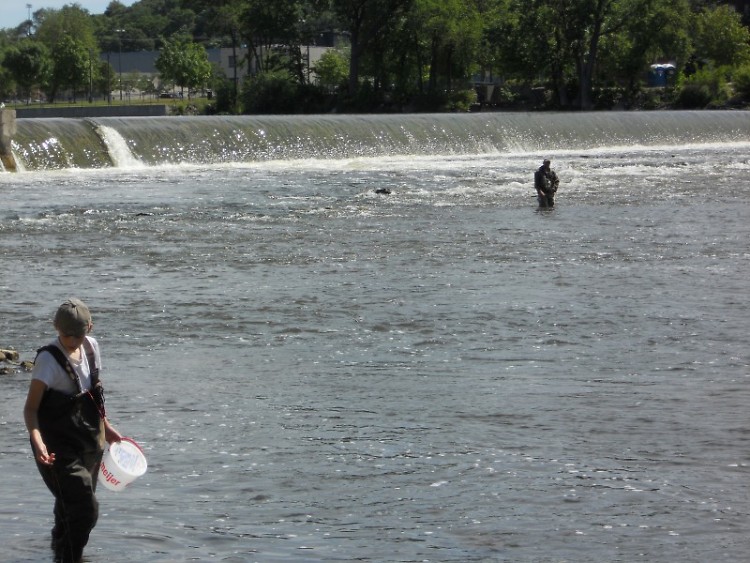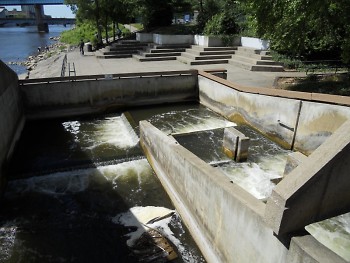There’s been a lot of talk in recent months about the Grand Rapids Whitewater group and their plans to build a whitewater kayaking park in the Grand River. This would require removing several dams – most notably the Fourth Street and Sixth Street dams – and adding tons of rock and boulders back into the water. The goal is to refashion the river back to the way it flowed before Grand Rapids was settled and, of course, to bring back the rapids.
But the hype surrounding just one piece of this restoration - a proposed kayak park - has received more attention than some other plans and uses for a restored Grand River, according to Phil Skaggs, West Michigan Director for the Michigan League of Conservation Voters. Skaggs says a more naturalized downtown waterway will create more than just a few waves.
In fact, the first part of what Skaggs calls “river restoration and activation” has already begun. Improving the water quality has been an important first step towards making the river a cleaner, healthier body of water and as Skaggs notes, an issue that the West Michigan Environmental Action Council and other environmental groups have been working on for years. Activities include advocating for a sewer system known as CSO separation, stormwater management and low-impact development to minimize pollution in the river.
The next phase of river restoration and activation plan is recreation. This is the part of the plan that requires putting the rapids back into the river.
“We basically have a city in Grand Rapids that is named for something that doesn’t exist and there is widespread support for bringing the rapids back,” said Skaggs.
As explained earlier, this means removing some or all of the dams and importing rocks back into the river. Dam removal has become a hot-button issue for local anglers who fish for steelhead along the Fourth Street dam and who are worried that changing the hydrology of the river will negatively impact the number of fish in the area. But Skaggs said that dam removal would actually enhance the Grand River fishery.
“The fisheries would be greatly improved. Some of the species that we have, like sturgeon and steelhead, would be able to, with the Sixth Street Dam removed, go back to their original spawning grounds. This would improve our urban fisheries,” he said.
Skaggs also said that the restoration would create more favorable water conditions for the high school and college rowing teams that practice on the river.
The final two steps in the river restoration and activation plan include fixing the trail system that runs downtown along the river and improving the parks and green space that exist along the bank.
“We have a river walk downtown. It was built in a little bit of a haphazard fashion. Part of this project would be trying to get funding to make it the best river walk that we possibly can and connecting the river walk with the incredible system of trails that we have in Kent County. This is a project that has captured the imagination of Grand Rapids,” said Skaggs.
Skaggs said that he hopes to see serious movement on river restoration plans by 2014.
The Rapidian, a program of the 501(c)3 nonprofit Community Media Center, relies on the community’s support to help cover the cost of training reporters and publishing content.
We need your help.
If each of our readers and content creators who values this community platform help support its creation and maintenance, The Rapidian can continue to educate and facilitate a conversation around issues for years to come.
Please support The Rapidian and make a contribution today.


